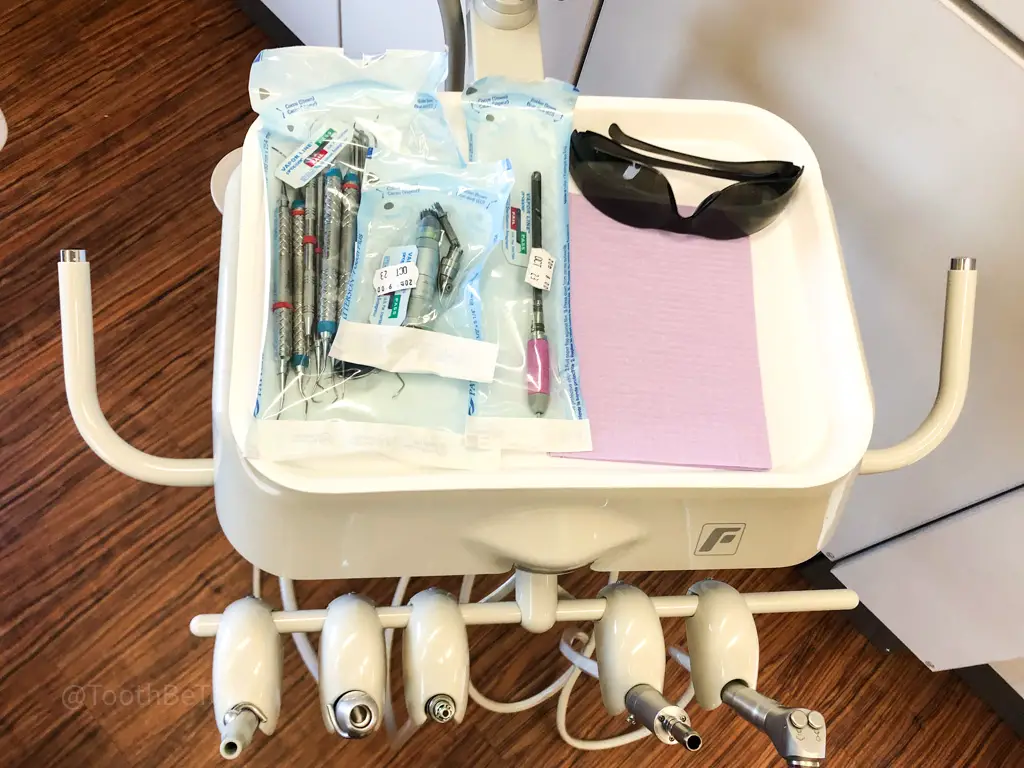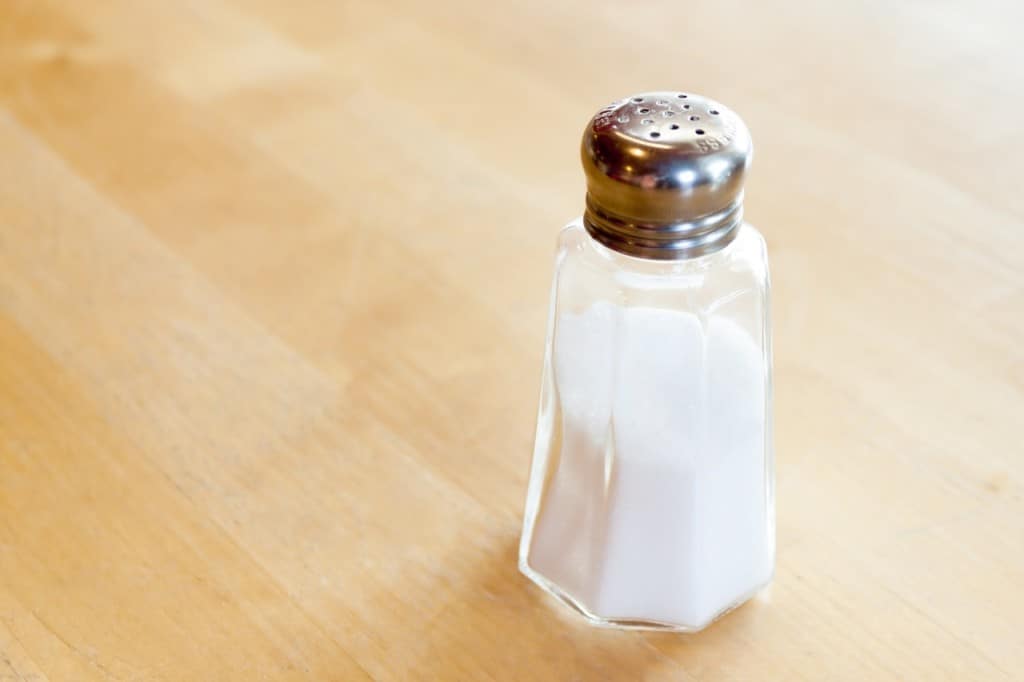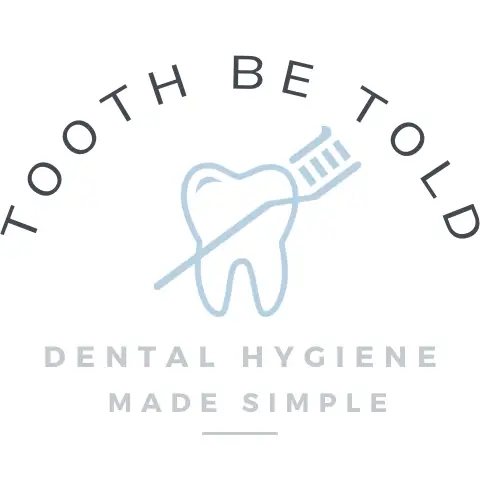We have all heard someone crack a joke about how the dental hygienist makes them bleed or the hygienist has cut their gums. But can dental hygienists cause damage to the gums in our mouths?
If a dental hygienist is not accurately using the tools, damage to the gums can occur. Also, if debridement is not thorough, calculus (tartar) that is not removed can exacerbate gum disease and damage both the jaw bone and gum tissue. Improper sterilization can also spread bacteria and viruses.
However, with proper instrumentation, it is entirely safe to use the dental instruments under the gum line or to come in contact with the gums. When appropriate instruments and techniques are used along with proper sterilization and disinfecting of dental instruments and the room surfaces, no damage will happen to the gums.
Below I go into more detail about gum damage and explain red flags to look out for when you’re having your teeth cleaned and how to help heal damaged gums quickly.

How dental hygienists can damage gum tissue and how to avoid it
Seeing a professionally trained dental hygienist is the best option to protect the gum tissue and prevent injury and spread of disease.
I would also add that seeing a dental hygienist for a professional cleaning is better than seeing a dentist. Dental hygienists are trained specifically for cleaning teeth, just as you would not want your dental hygienist performing a root canal on your tooth. A dentist is specifically trained to do root canals.
Dental offices that do not have a dental hygienist are a huge red flag. You want someone to clean your teeth who does it all day, every day!
Below is a list of how your gums can become damaged.
Improperly sterilized dental instruments can damage gums
There is also damage from unclean and improperly sterilized dental instruments. Having sterilized instruments is the most critical factor and maintaining a healthy environment in the mouth.
Not only do licensed professionals undergo extensive training, but we have the highest standards of sterilization. If you see someone not qualified, they are not adequately trained on infection control, and there is a higher risk of infection from unclean instruments.
An infection in the gum tissue can cause tissue damage/loss. Make sure you are observant of the cleaning procedures.
I always open the instrument package infront of my patient after they have sat down in the chair. This is a silent communication to them that I am using a freshly sterilized package of instruments on them and make them feel safer in the dental chair.
If the room is not correctly wiped down with the proper disinfectant, other illnesses can be spread, including blood-borne illnesses and viruses, including herpes simplex type 1 (oral).
Using a limited number of dental instruments can increase the chance of damage.
When dental hygienists use metal instruments on the teeth, we have a vast array of different instruments we can choose from. Each instrument is designed for a specific area in the mouth to maximize comfort for the patient and be most effective in that area of the mouth.
Some dental hygienists do not put effort into learning new instruments that can make dental hygiene appointments more effective and comfortable.
For myself, I have a large kit of instruments with at least ten different scalers (the instruments used for the removal of calculus/tartar on the teeth). Whereas I have worked with hygienists who make do with 4, I often hear complaints that they were rough and not as comfortable having their teeth cleaned.
Do you feel like your dental hygienist damaged your gums?
If you are worried about a dental hygienist damaging your gum tissue, it may be good to ask around your friends and family to see where they go and ask for recommendations and ask them about their experiences.
This can be a little warped, though, as people’s interpretation of pain and discomfort can vary, especially considering their oral health status.
Dental hygiene cleaning will be more sensitive if someone’s oral health is poor and they have inflammation in the gum tissue. The more extensive the amount of build-up of calculus and the presence of gum disease, the more sensitivity or pain there will be. Just like a fresh bruise will be tender if you poke it!
Poor technique/not a thorough cleaning
If a dental hygienist does not remove all the calculus (tartar) off the teeth and leaves some behind, this can cause many issues.
This piggybacks off of having a properly trained dental hygienist perform your cleaning for you. A properly trained dental hygienist knows how to remove all present calculus on the teeth.
If a dental hygienist knows they are leaving calculus behind (for example, if there was not enough time to complete the appointment), the hygienist is obligated to inform the patient and bring them back as soon as possible to complete the cleaning.
If calculus is left under the gumline, the gum tissue can tighten over top of it, which can potentially cause a gingival abscess.
Chronic inflammation of a gingival abscess will cause tissue destruction and loss of gum tissue, potentially affecting the bone supporting the teeth.
If you are worried you did not have a thorough cleaning, you can always get a second opinion and even ask the dentist to check. Or you can switch providers.
How to heal damaged gums; 7 ways
There are different ways to promote the healing of the gum tissue, which I go over below.
It is important to note that most injuries in the mouth take about 2 weeks to heal fully.
1. Be gentle around the gums that are damaged!
Please don’t touch it with your fingers or any foreign object as it can introduce harmful bacteria or irritate the tissue further.
You want to be gentle around the damaged area but don’t want to avoid it altogether, as keeping it clean will promote healing. Depending on the area that was damaged, you may want to avoid flossing that particular area for 2-3 days.
2. Use an extra-soft toothbrush or baby toothbrush
Use an extra-soft toothbrush. You could even get a baby/infant toothbrush as they are super gentle on the gums. Avoid using too much pressure while brushing.
3. Avoid abrasive/whitening toothpaste
You can also avoid abrasive toothpaste – all whitening toothpastes have abrasives in them.
The abrasives in the whitening toothpaste can wear away the tissue, delaying healing.
Fact; whitening toothpaste will not whiten your teeth, and overuse wears away the enamel, resulting in teeth becoming more yellow with time.
4. Avoid SLS in toothpaste.
Many people are intolerant to SLS (sodium lauryl sulphate), which can cause the gum tissue to proliferate more, causing irritation, tissue peeling and delayed healing.
I wrote a post about the effects of SLS. You can find it linked below if you want to learn more about it! 🙂
Read now: Tissue in Your Mouth Peeling? Causes and How to Stop It.

5. Use salt water rinses daily for at least 7 days
The best thing to do is to be gentle around the gums. You can do warm salt water rinses if you are not on a salt-restricted diet.
Warm salt water is the best way to promote healing in the mouth and is free of harmful chemicals. I linked my post below with the recipe and instructions for use, as it is imperative to have the right salt concentration in the rinse for it to be effective!
Read now: Salt Water Mouth Rinse Recipe for Surgery, Ulcers, Infections.
6. Avoid acidic food and STAY AWAY from lemon water!
Acidic food and drink can also irritate the tissues, and it will hurt! (Also, this is extremely bad for your teeth).
PSA: lemon water may be the worst thing you could do for the health of your teeth as it will erode away the tooth surface, and make it softer, increasing the incidence of tooth decay and tooth staining.
7. Avoid crunchy food
Avoid crunchy chips (especially tortilla chips – I speak from experience), as the hard edges can further damage the gums and prevent healing. Any food that is hard to break down in the mouth can also get lodged under the gumline.
It’s not always the hygienist’s fault; Other causes of bleeding gums
It is important to note that mistakes can happen, and I have even had a patient abruptly move their head, and I’ve poked their gums, cutting them.
But if the gums are not directly damaged, there should be no reason that the gums are bleeding. A patient with healthy gum tissue should not bleed upon proper instrumentation.
I always use the example with my patients;
If you were to wash your hands, and your hands started to bleed, we would immediately start to worry.
Our gum tissue is not meant to bleed. Bleeding is a sign of infection and inflammation and indicates gingivitis.
If your gums are bleeding, it is so vital that you see a dental professional as soon as possible and make sure you are flossing once a day and brushing twice a day.
I hope you have found this post helpful 🙂
Have a wonderful day,
Holly 🙂
